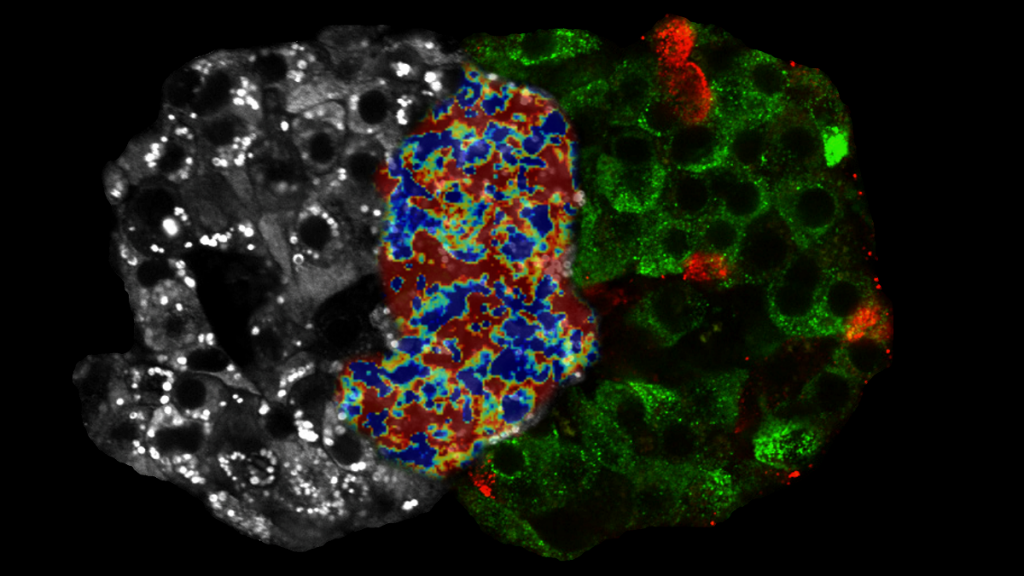
For the first time, the metabolic response of specific cell populations in tissue districts responsible for hormonal regulation of blood glucose in humans was measured, using an infrared light beam that does not interfere with the vitality of the tissue. New perspectives open for understanding the mechanisms of glycemic control, and their dysregulation in diabetes. Research at the NEST Laboratory of Scuola Normale by Francesco Cardarelli and the CAPTUR3D European Project Team
PISA, November 13th, 2022. Deciphering the molecular response to glucose of specific cell populations in the tissue districts responsible for hormonal regulation of blood glucose in humans, without interfering with the vitality of the tissue.
This is the result obtained at the NEST Laboratory of Scuola Normale Superiore by a team of researchers coordinated by Professor Francesco Cardarelli. The platform used is that of infrared light optical microscopy, a technology that guarantees high tissue penetration and high spatial resolution, without being toxic to the cells and without requiring the manipulation of the sample. In fact, conveyed to the sample at specific frequencies, the infrared light excites the intrinsic fluorescence signal of molecules fundamental for the biochemical processes of the cell, and through this it reveals cell metabolic state. The method, combined with the use of antibodies, made it possible to identify the metabolic response to glucose of specific cell populations, the “alpha” and “beta” cells, respectively responsible for the production and release of glucagon and insulin.
“Our technology can reveal the metabolic state of the cell and its response to specific stimuli, for example a sudden change in the glycemic level, non-invasively and in real time – explains Cardarelli -.”So far applied to tissues from healthy donors, we can imagine in the near future to extend its use to the tissues of diabetic patients and to test the effect of drugs on the metabolic response of pancreatic cells ”.
The research team directed by Prof. Francesco Cardarelli involves researchers from Scuola Normale Superiore and from the Department of Endocrinology and Metabolism of Organ and Cell Transplantion at the University of Pisa (Cisanello Hospital). The results were published in the Nature Publishing Group’s Communications Biology journal (link: https://rdcu.be/cZu36) and presented at the Congress of the European Association for the Study of Diabetes (EASD 2022, Stockolm; link to oral presentation: https : //www.easd.org/media-centre/home.html#! resources / single-cell-resolution-imaging-of-alpha-beta-cell-metabolic-response-to-glucose-stimulation-in-living- human-derived-langerhans-islets). This study is part of the ERC Consolidator Grant “CAPTUR3D”.
